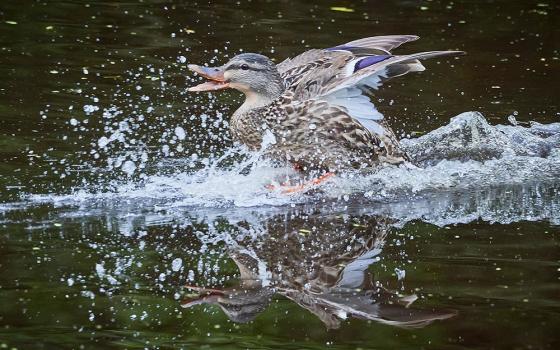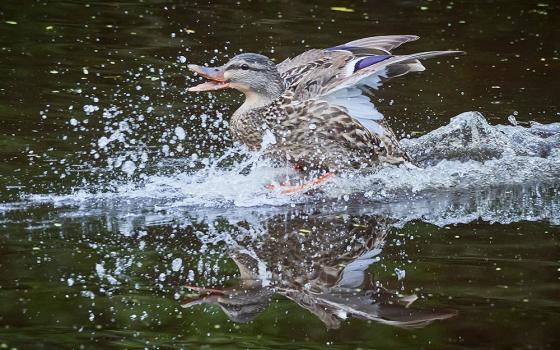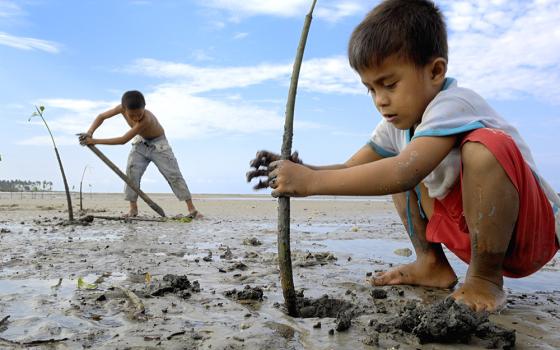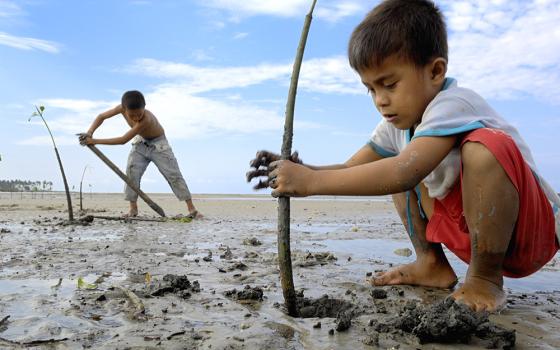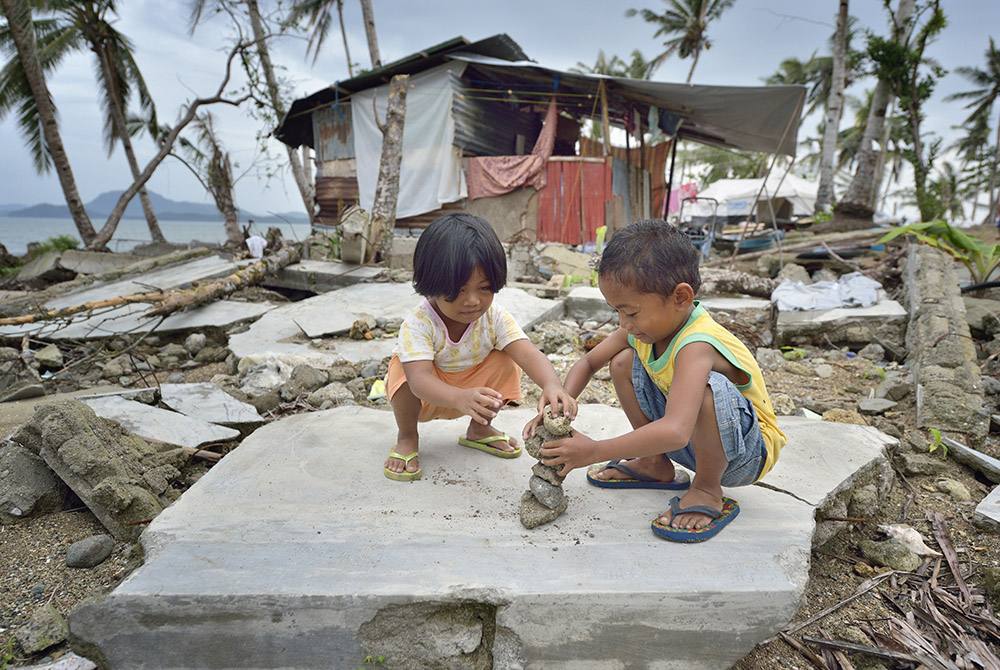
Nicole and Gilbert Adona begin rebuilding their home after a typhoon in the Philippines. (Paul Jeffrey)
Editor's note: This Season of Creation, join award-winning photographer Paul Jeffrey for "Lens on Creation" as he examines the world through the lens of his camera and his faith. Sign up here to receive Jeffrey's reflections in your inbox every Monday, Wednesday and Friday from Aug. 31 to Oct. 4.
I've been covering disasters for decades, and finding Nicole and Gilbert Adona beginning the reconstruction of their family's home in the Philippines soon after it was flattened by a typhoon was not unusual. People, even children, are incredibly resilient.
Healing the Earth starts with not blaming Mother Nature for what's not her fault. That means admitting that what we often call "natural disasters" are not entirely "natural." Rather, disasters are usually an unfortunate encounter between natural threat and human vulnerability. There’s little we can do about the former, though there's certainly strong evidence that climate change (for example, the rise in ocean surface temperatures) is making hurricanes and typhoons more severe.
But there's a lot we can do about vulnerability. We can work for justice, which helps communities be more resilient, and thus able to withstand the inevitable natural threats that come their way. That means everything from supporting community organization to better enforcement of building codes to assuring that women are full participants in emergency planning and mitigation efforts.
Caring for creation also means caring for human beings, especially the most vulnerable. In a world challenged by the climate crisis, we are called to Gospel action that can overcome environmental deterioration with new, more effective forms of solidarity. If we need inspiration for that task, we need look no further than the resilience of the poor who daily struggle to survive the ongoing disaster that is poverty and marginalization.
For reflection and action:
What natural phenomenon could cause a disaster in the place where you live? Who would be most affected? What could be done to make them less vulnerable? Are groups or government agencies working to do that?
[Paul Jeffrey is a founder of Life on Earth Pictures and lives in Oregon. You can follow him on Instagram.]
Advertisement



